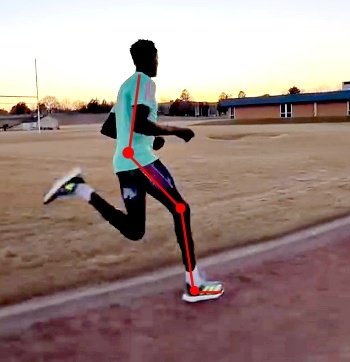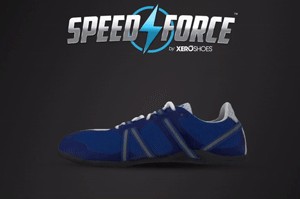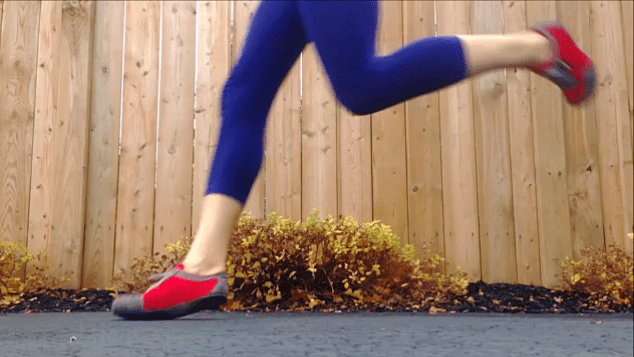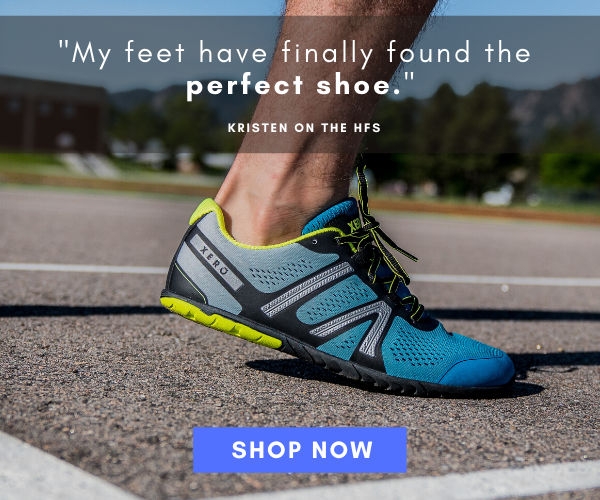In running, in order to safeguard your lower back in ways the sustains best, one of the best changes to your running form is to switch from heel striking to forefoot striking. This is because mounting confirming evidence shows forefoot running provides better protection against damaging impacts on the shins, knees and back whereas heel strike running is the biggest contributor to increasing all-around impact levels across multiple sites on the body.


One intriguing discovery revealed that landing on ahead of the arch, on the balls of the foot (i.e. your forefoot) when running reduced loading on the lumbar spine as compared to heel strike running. These findings came from a 2013 study in the journal of Medicine and Science in Sports and Exercise which found that when heel strike runners ran barefoot and landed with a forefoot strike, leg impact at contact and shock attenuation was dramatically reduced, meaning less shock was produced, therefore less shock was needed to be absorbed by the lumbar lordosis.
- The lumbar lordosis serves as a natural shock absorber during running. The researchers found that forefoot striking did a better job at sustainably reducing leg shock at landing, thereby unburdening the lumbar lordosis of elevated shock.


The researchers also pointed out that the forefoot strike landing led to positive positional changes in the lower back and pelvis during running:
- A change in stride length, such as reduced stride length in forefoot strike running, caused positional changes in the pelvis that corresponded to lumbar lordosis changes as compared with heel strike running.
Heel Strike Running: VERY Bad News for the Lower Back
The same study discovered that the heel strike runners had greater overall foot-ground impact which resulted in more shock that was attenuated by the lumbar lordosis than the forefoot strike runners. This finding is also not the first to suggest that heel strike running is damaging for the back. Read more here about how the impacts related to heel strike running directly causes disc degeneration that is resolved by forefoot running.

In addition, the heel strike runners had greater overall low back excursion which inflicted a sizeable demand for stability in the lumbar spine.
The Take Home Message
When it comes to protecting your lower back long-term in running, the research reveals foot strike matters immensely whereby forefoot running prevents the weakening of the shock-absorbing structures in the back, while perfectly preventing impact-induced degenerative changes to the lower back that are directly caused by heel strike running.
In that light, here are more injuries directly caused by heel strike running that are prevented by forefoot striking.
If you’ve enjoyed this post, you’ll love my content at my YouTube channel, here, where I show why forefoot runnings works for everybody!

References:
Delgado et al. Effects of foot strike on low back posture, shock attenuation, and comfort in running. Med Sci Sports Exerc, 2013;45(3):490-6.
Driscoll C, Aubin CE, Labelle H, Dansereau J. The relationship between hip flexion/extension and the sagittal curves of the spine. Stud Health Technol Inform. 2008;140:90–5.
Franz JR, Paylo KW, Dicharry J, Riley PO, Kerrigan DC. Changes in the coordination of hip and pelvis kinematics with mode of locomotion. Gait Posture. 2009;29:494–8.
Uetake T, Ohtsuki F, Tanaka H, Shindo M. The vertebral curvature of sportsmen. J Sports Sci. 1998;16:621–8.
Voloshin A, Wosk J. An in vivo study of low back pain and shock absorption in the human locomotor system. J Biomech. 1982;15:21–7.

Or, you can support Run Forefoot by shopping at the BEST Barefoot Shoe Brands, and be sure to bookmark these links 🙂
Lonowear: https://lonowear.com/?ref=cedsholh
Saguaro: https://www.saguaro.com/?ref=9bVA8fEkmDvB-I
Vibram FiveFingers: https://amzn.to/3VQLAUI
Vivobarefoot: https://amzn.to/3vycQOY
Be Lenka: https://www.tkqlhce.com/click-7600968-13947200
Xero Shoes: https://xeroshoes.com/go/Run_Forefoot
Iguaneye: https://www.iguaneye.com/?ref=8tfXVc92
Soft Star Shoes: https://shrsl.com/3mp1b
Wilding Shoes: https://bit.ly/3lIygQP

